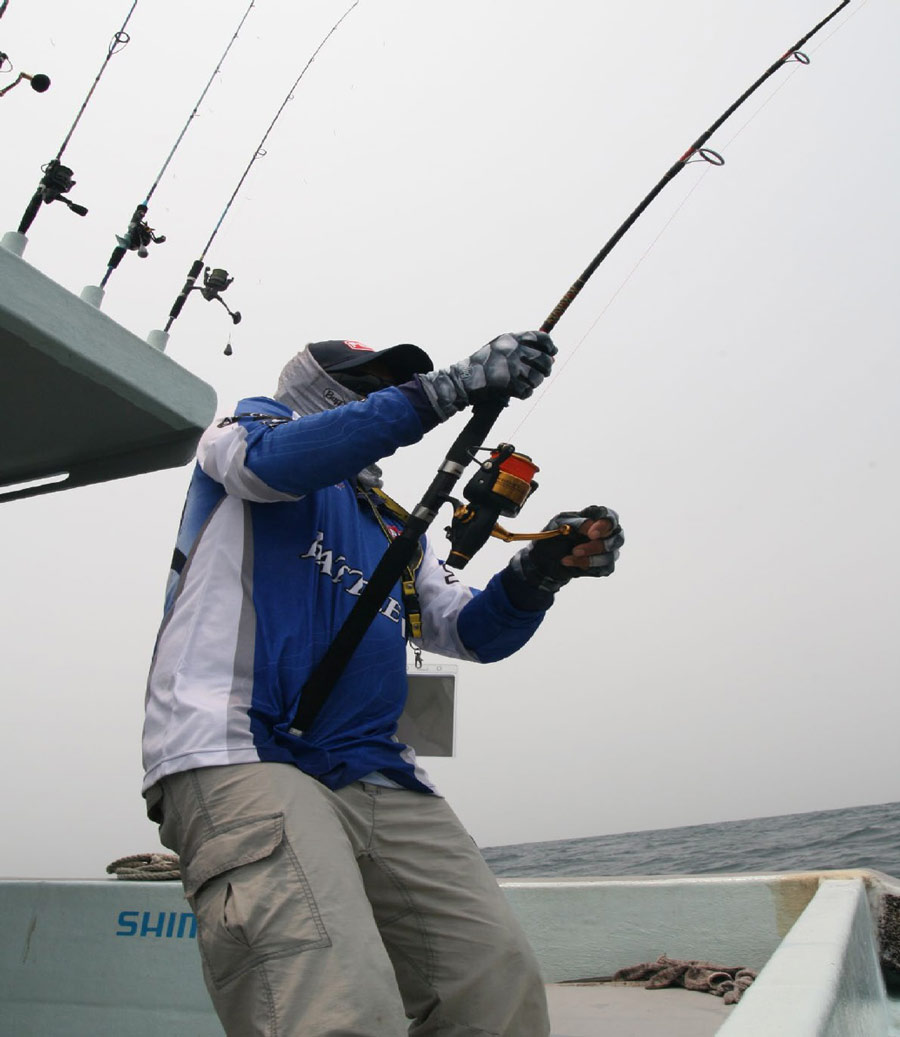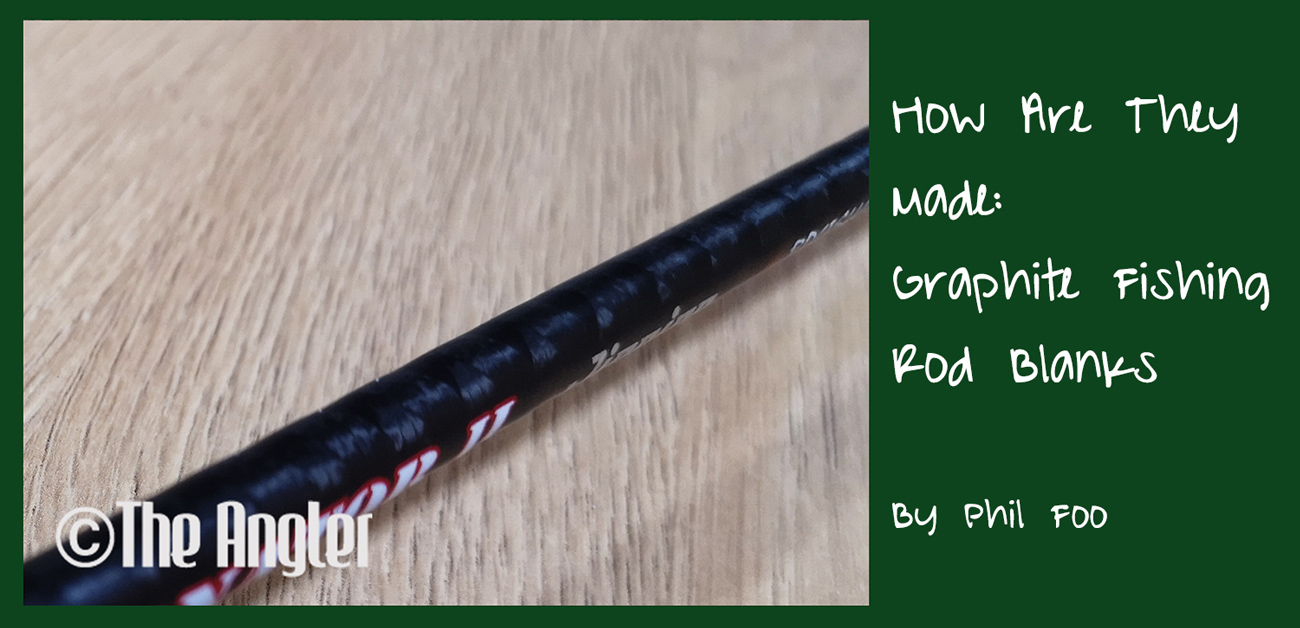
When we talk about fishing rod blanks, what we are really talking about is the graphite or fiberglass rod minus everything else. To be even clearer; we are talking only about the rod without taking into consideration the reel seat, rod guides, rod grips, threads, washers, etc., just the cylindrical tube and nothing else. So, how are graphite fishing rod blanks made?
[ These graphite sheets are created with layers of graphite fibers, glass fibers (for flexibility), other specialized materials, etc… ]
Before discussions on the design on the rod even begins; talk on segment starts first. By knowing which segment of the sport (fishing) the rod is being made for; rod designers and builders will be able to plan for the rod’s action, design, and cost. So yes, many a fishing rod started life on a piece of paper (or pieces of paper).
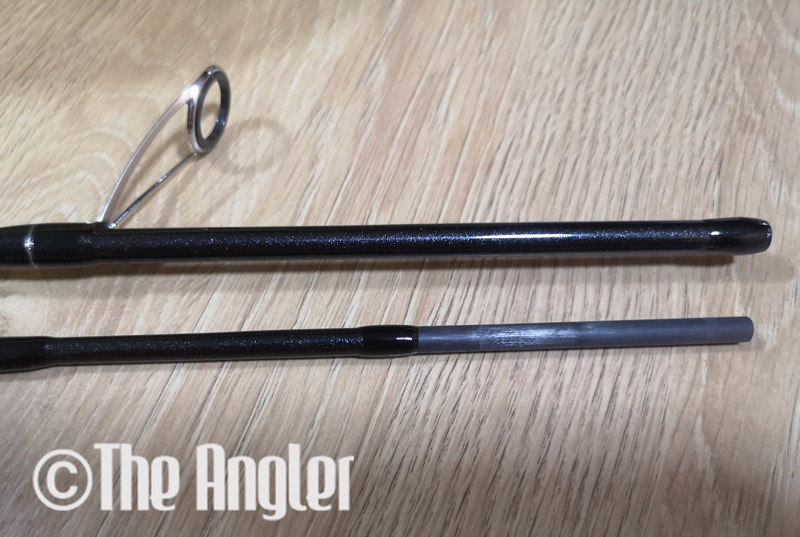
Graphite blank showing a section that has been wrapped and epoxied, and another section that is not.
With the segment agreed upon, the team discusses the rod’s action coming to a few that suits the segment; hence the reason for a few rods within a segment. From there rod design and cosmetics come into play. Finally, the cost of manufacturing is agreed upon. In this article we will focus on the building of the rod blank.
Graphite Sheets
Graphite fishing rod blanks are made using graphite sheets. These graphite sheets are created with layers of graphite fibers, glass fibers (for flexibility), other specialized materials, etc. These materials come in different strength and rigidity. All of these are held together with a resin; creating the graphite sheet which is called pre-preg.
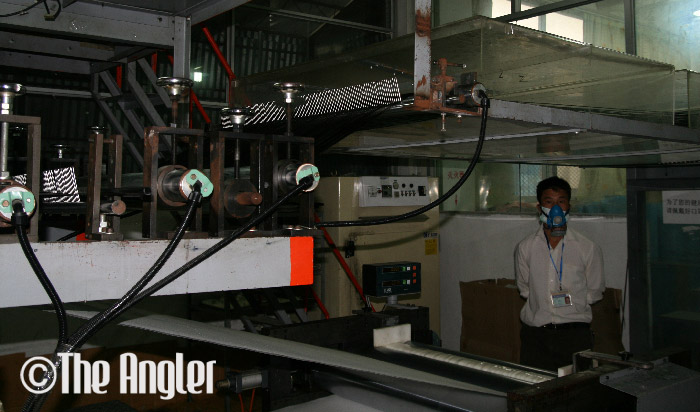
Graphite sheets being made.
The graphite sheet or pre-reg is then cut into shape. The shape cut creates a wider section of what will be the rod butt, and tapers down all the way to a narrower section of which is the tip. Certain sections or areas of the sheet are strengthened with additional materials. All of these are done before the graphite sheet or pre-reg is rolled into a tube.
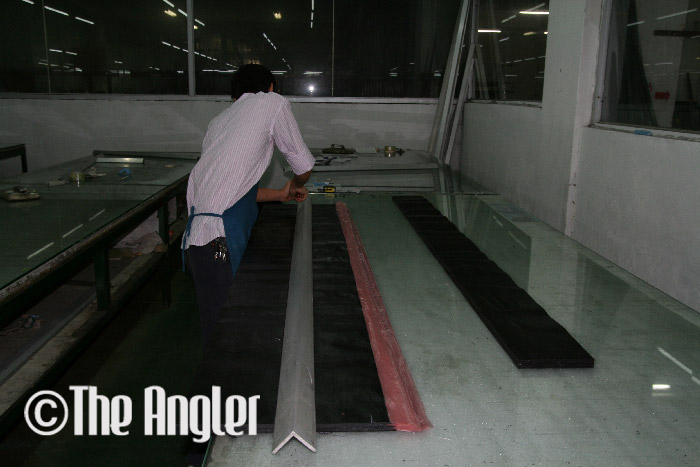
Graphite sheets being measured and cut.
Creating The Tube
To roll the graphite sheets into a tube (rod), a mandrel is used to help shape the rod (tube). A mandrel is a piece of solid cylindrical metal rod. The mandrel determines how “fat” or “thin” the rod blank it. The thinner the mandrel, the thinner the rod blank. The fatter the mandrel, the thicker the fatter the rod blank.
Next we come to the wall of the rod blank. What we mean when we talk about the wall of the blank is not the diameter of the rod blank, but the thickness of the layer of the graphite. We have determined earlier that the graphite sheet is rolled into shape using a mandrel. The thickness of the wall is dependent on how many times the sheet is rolled. Each time equals one layer. More times equal more layers.

Graphite blanks are rated based on tonnage or ton and modulus (IM).
A thicker wall does not mean that the rod blank will be stiffer. Stiffness depends on the materials used to build the graphite sheet or pre-reg used. For example, a graphite sheet built using more carbon or graphite fibers and lesser glass fibers will result in a stiffer sheet. It will certainly push the cost up but the benefits are a lighter, thinner, stiffer, and more sensitive rod blank. A softer or lower action rod will require lesser layers of the said sheet.
One think to note is that a thicker wall also means more weight. The rod blank builder will have to create a balance between weight, blank wall thickness, and cost when building rod blanks. The thinner, lighter, more sensitive the blank; the higher the cost. The more specialized materials used, the higher the cost. An example of a specialized material is Nano technology coating.
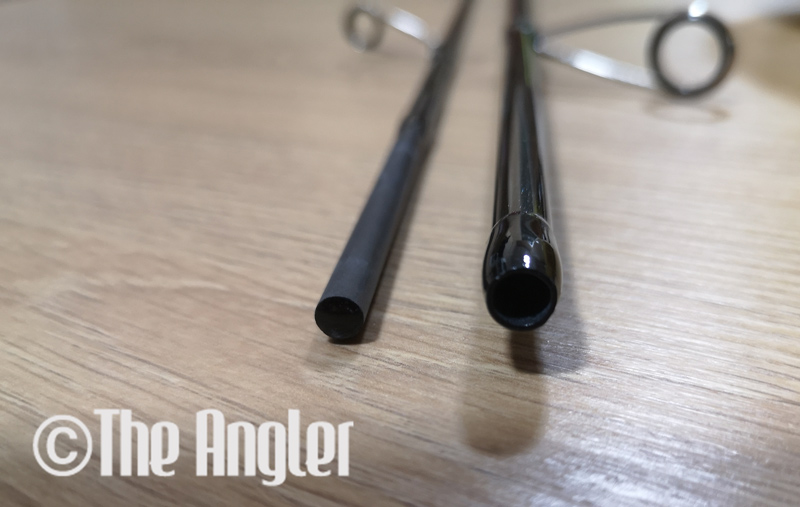
One can see the thickness of the blank wall.
After rolling the graphite sheet or pre-preg around the mandrel tightly; the rolled sheet and the mandrel is placed into a special oven. The heat melts the resin and this fuses the layers of graphite sheet or pre-preg together into one, creating a cylindrical graphite tube. After the baking process, the mandrel is removed and what’s left is the fishing rod blank. The blank is then smoothen before heading to the next process.
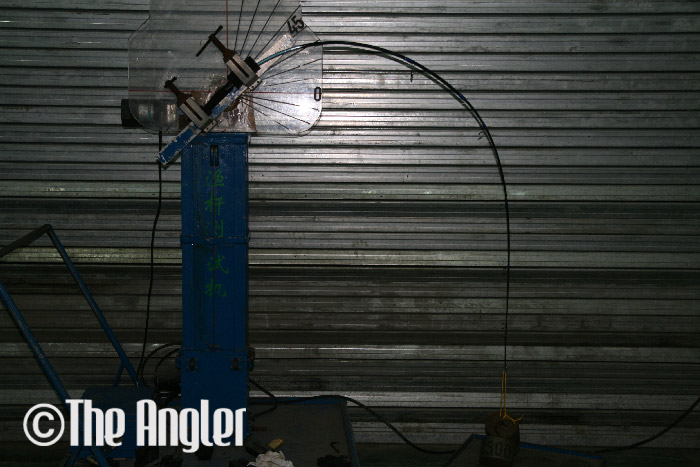
A rod being tested after it is built.
The rod blanks are then made into fishing rods at the assembly line where colours, stickers, rod grips, reel seats, rod guides, etc. are secured to the blank. There are rod blanks that come with certain special wrappings too to enhance the rod. This is usually done to make the rod tougher, have better recoil, etc.
So, if you have been wondering how fishing rod blanks are made; I hope this article answers your question. Of course this is a simplified version of how blanks a build. There are other things involved like research and development, gauging or determining the action of the blank, break test, etc. in the process as well. Perhaps these will be left for another time.
